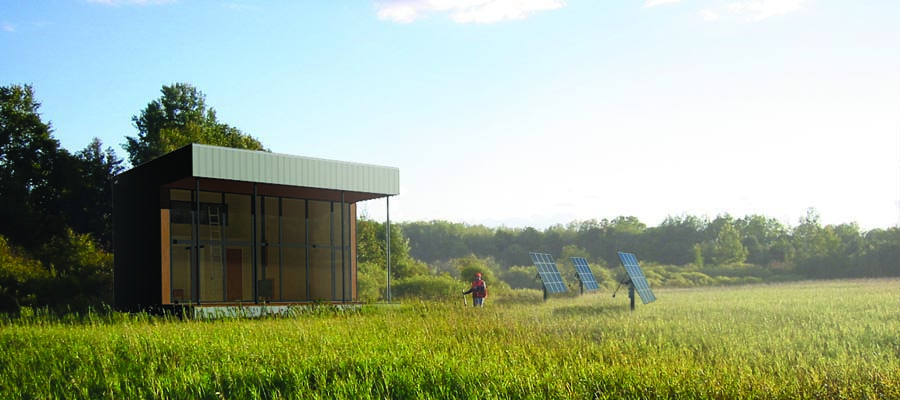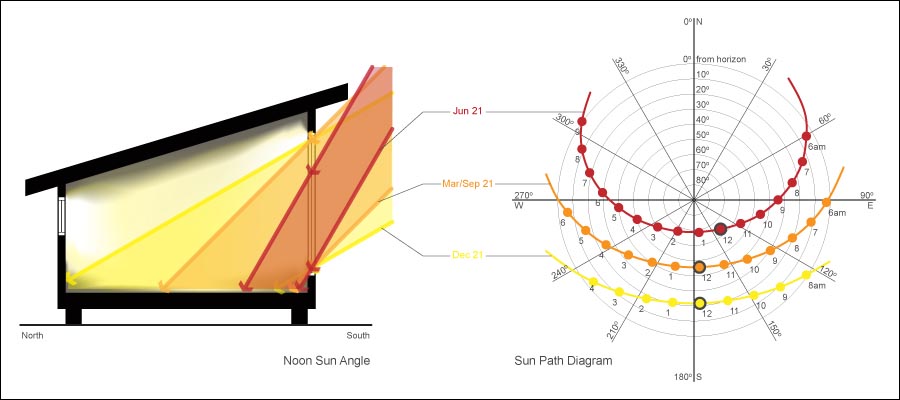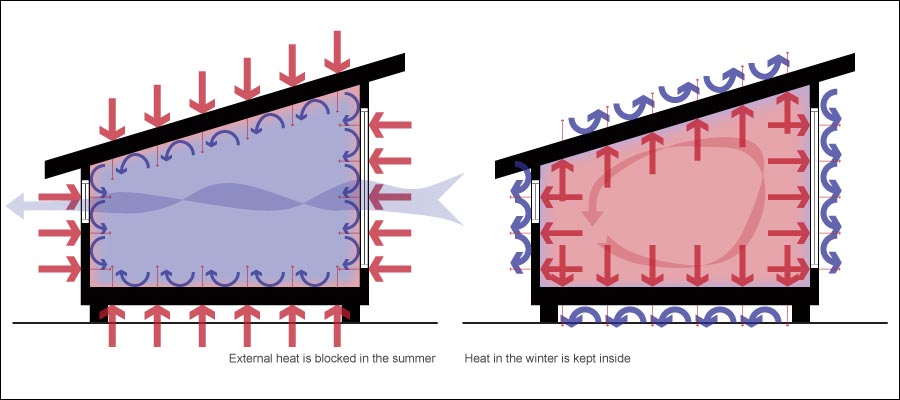Small Domains
Small Domains are designed to be lean and green; a small footprint means small energy use. Anxieties of day to day life melt away while relaxing in these simple shelters. SIP panel construction, day-lighting design, minimal site disturbance, and optional off-grid packages further contribute to overall reductions in energy use and a smaller environmental footprint. Small Domains are designed to create warm, healthy, and inviting shelters that allow simple and easy living in whatever landscape you enjoy most. The final result is a building that is extremely strong, energy efficient, low in maintenance and cost effective.
Daylighting
Each Small Domain is designed with an optimal daylighting strategy in mind.
Energy Efficiency
The first part of energy efficiency is constructing a building that prevents as much air leakage as possible. Air loss is the way in which warm air leaves in the winter and enters in the summer.
Materials
Using "green" to describe materials can be particularly misleading. In the case of each Small Domain, materials have been selected based on their environmental impacts over their complete life cycle. Instead of focusing primarily on what a material is made of, we look at it over a given period of time (usually 5, 30, 60, or 100 years). This means that we are not looking at specific materials, but rather, materials as part of a system. For example, an asphalt roof needs to be replaced every 15 years. This means that over a 60 year life cycle, the environmental impacts as well as the cost of 4 asphalt roofs will be considered. Similarly, steel roofs are replaced every 50 years, so during a 60 year life cycle the impacts for 1.2 roofs would be calculated. This means taking into account where and how the raw materials were extracted, how they were manufactured into building materials, how long they will be installed on a building and how often they will be replaced, and how and when they will be disposed of. This is also referred to as the embodied energy of a material. This is a measure per physical unit of a portions (usually by the pound or kilogram) life cycle impact. This differs slightly from simply using “green” materials because under that definition, the full system is not considered.
Net Zero Energy
The graph above shows the theory behind Net Zero Energy using the Bunkhouse as an example. The bars represent the yearly energy consumption in red (-1,162 kWh) and production in green (+6,000 kWh) as well as the embodied energy red dotted (-74,736 kWh). The philosophy underlying net zero energy is a building is truly sustainable when it produces at least as much energy as it consumes. Thus energy consumption which is positive number on our electric bills (1,162 kWh) is considered to be a negative credit towards net zero energy. Energy production, on the other hand, is a positive credit toward a net zero building. The graph above shows how achieving net zero energy works over time. The bottom half of the graph is the yearly energy consumption, while the top is yearly energy production. Starting at year 0 (construction) the energy consumed is already quite great due to the embodied energy (-74,736 kWh) of the materials used to construct the bunkhouse. Both the demand and supply are hypothetical, yet not out of the question. Starting at year 1 production begins, and as long as it is greater than demand, the building will eventually achieve net zero. How long this takes, however is a function of how great the over production is each year. In this case the demand (-1,162 kWh) is extremely low due to both efficiency and conservation. Production, at +6,000kWh per year, is relatively high due to a large residential wind turbine. The difference of +4838 kWh means that each year 4838 kWh of clean electricity is produced to offset the energy that was required to produce the building At this pace the Bunkhouse will be net zero in 16 years. Net Zero is a holistic way of designing buildings that incorporates how people live, the materials that they like, the modern necessities and technologies, and the latest in construction materials, and power sources. While Net Zero still requires energy, it utilizes that energy as efficiently as possible guaranteeing that your building is as good a steward to the natural world as possible.
Domain Architecture & Design 2748 Hennepin Avenue South Minneapolis MN 55408 T: 612 870 7507 F: 612 870 7509 info@domainarch.com





